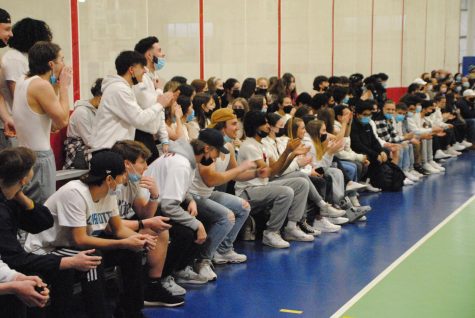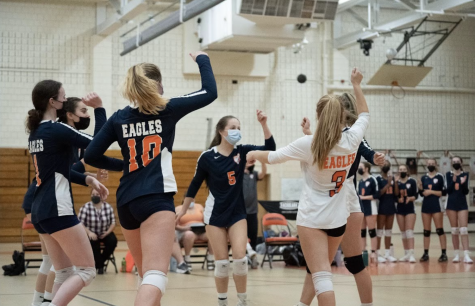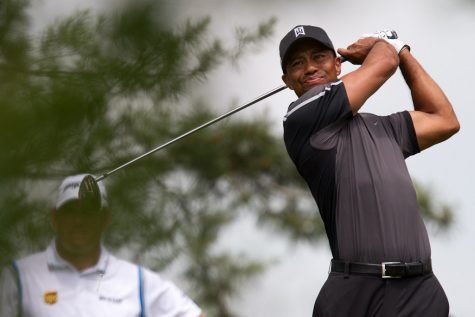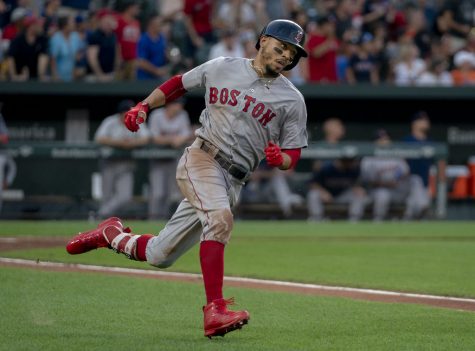Red Sox open up checkbook to sign prospect
The Red Sox signed a hot Cuban prospect heading into spring training, but what does it mean for the sport?
The big Boston headline: 19-year-old Cuban phenom Yoan Moncada signs with the Red Sox and collects a record-breaking $31.5 million signing bonus. Add the 100 percent tax as a result of the Sox exceeding their allotted international spending limit, and total money spent on Moncada comes out to $63 million.
The largest international signing bonus before Moncada? The Diamondbacks gave Yoan Lopez $8.25 million. Replay that one in your head, maybe in the voice of Dr. Evil from the Austin Powers movies—a 19-year-old kid essentially signs for a total price tag of 63 MILLION DOLLARS.
Elite talent, superstar potential, you can say whatever—the fact that a young, unproven player such as Moncada received this much money shows one of the many flaws of MLB’s system for signing international players.
For Moncada, of course, it’s the American Dream come to life.
“The escape from Cuba is fraught with peril and far from a certain path to a future in the big leagues,” wrote Jesse Sanchez of MLB.com.
But if you hail from that island so close and yet so far away, getting to the big leagues is the only way to get that mountain of cash. For players such as Dodgers infielder Alexander Guerrero, who made $17 a month playing baseball in Cuba, coming to the United States was the only way to have a career in the sport.
“There’s a 50 percent chance you make it and a 50 percent chance you don’t,” Guerrero told MLB.com. “Maybe you get arrested […] but it’s worth the risk to make a better life for yourself and your family.”

The ability of big-market teams to absorb financial penalties for signing international players threatens competitive balance.
That’s great for Guerrero and Moncada and nobody would ever fault them personally. The system itself, however, heavily favors wealthy teams and leaves everyone else in the dust. The truth of the matter is teams such as the Red Sox, Dodgers, and Yankees are at the top of the market and paying a 100 percent penalty means nothing to them.
On the flip side, small-market teams such as the Athletics, Indians, and Astros can’t shell out that kind of cash and they are at a distinct competitive disadvantage.
The system is rigged.
“We thought we put a set of deterrents in the international signing pool that would be effective,” Commissioner Rob Manfred told USA Today. “So far, I will say they have not been quite as effective as we hoped for.”
Statements like that don’t leave much hope for improvement in the immediate future.
The problem extends farther than just the free agent process. It’s beginning to affect the MLB draft process itself. Recently, 18-year old infielder Michael Chavis was drafted by the Sox and received a $1.8 million signing bonus. That is 1/35 of Moncada’s bonus.
Of course, it’s hard to argue that Chavis is a better prospect than Moncada at this point in their respective careers, but is Moncada really THAT much better? If nothing is done to change the system before it completely spirals out of control, the draft will be looked upon as a joke in comparison to talent outside the United States.
In fairness, there are numerous roadblocks to creating an international draft, including making sure pay cuts aren’t too drastic for international prospects or taking away the ability to sign players as young as 16.
The system, as it currently stands, seems to be heading toward a tipping point. Something has to give or one side is going to be left very unhappy.
With the gap growing bigger and bigger between international and American signing bonuses, something has to be done. How can MLB support both the international players’ stance while making sure its homegrown system doesn’t collapse?
That is a question currently without a good answer, but something better be done before small-market teams lose all hope in gaining international talent and the gap between the haves and the have nots threatens the structure of the entire sport.












